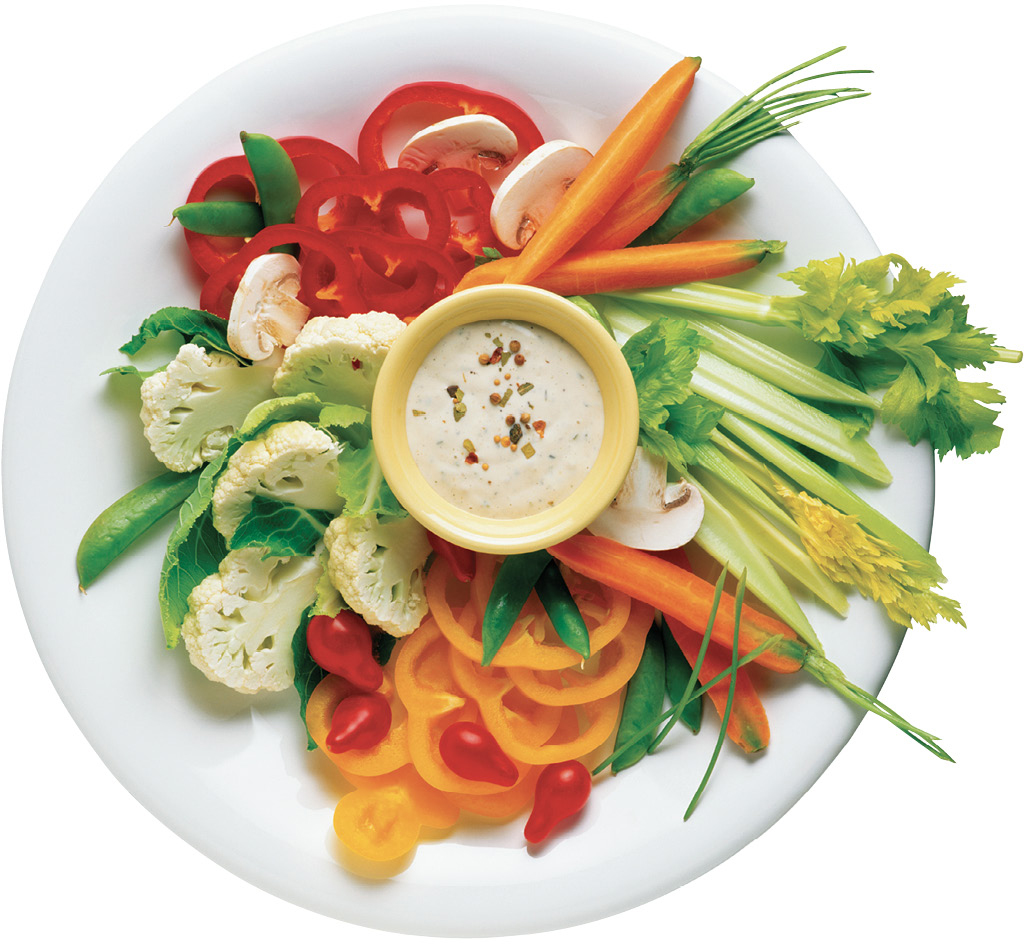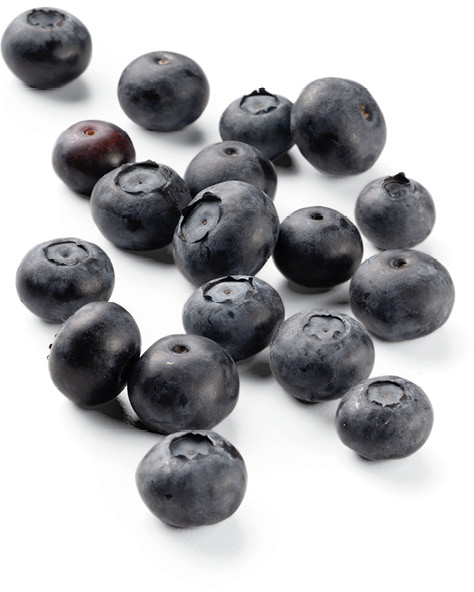
Now that you’re armed with the Seven Secrets of Magic Eating, where do you go from here? Altering your diet can seem dizzyingly difficult, but it doesn’t have to be, especially if you make one tiny change at a time. A good first step is to take stock of your eating habits and find out what you’re doing right—and where you could stand to make some gentle adjustments.
In this chapter you’ll:
• Quiz yourself to find out how Magic your diet is. You’ll be amazed how the simple act of acknowledging your eating habits can make you more open to changing them.
• Find and fix your dietary downfalls (we all have ’em).
• Learn the art of eating out. Since we eat so many of our meals out of the house, learning to outsmart restaurant menus and navigate the minefield of fast-food dining is key.
In Part 2, you’ll discover the 57 Magic foods and how to reap their blood sugar and weight-loss benefits. The Magic Meal Plans and Magic Recipes in Part 4 will be a great help, too, not to mention the Magic Meal Makeovers in Part 3. But before we take you there, let’s get you ready to go.
You’ll be amazed how the simple act of acknowledging your eating habits can make you more open to changing them.
Circle the number next to your answer for each question, then add up your score. Turn to here to see how you did.
1 If you were in my kitchen in the morning, you’d see me drinking:
a. Coffee or tea, plain or with low-fat milk and/or a little sugar or sugar substitute |
1 |
b. Coffee or tea with full-fat cream and/or loads of sugar |
2 |
c. A soft drink |
3 |
2 When I eat cereal for breakfast, I’m most likely to pick one like:
a. Cornflakes, Rice Krispies, or Corn Chex |
3 |
b. Grape-Nuts or Cheerios |
2 |
c. All Bran, Bran Buds, or Muesli |
1 |
3 When I drink juice, it’s:
a. A small glass of unsweetened juice such as orange or grapefruit |
1 |
b. A large glass of unsweetened juice such as orange or grapefruit |
2 |
c. A large glass of juice drink (5 to 30% juice) |
3 |
4 When I drink milk (or pour it over my cereal), it’s:
a. Whole |
3 |
b. 2% |
2 |
c. 1% or fat-free |
1 |
5 The bread on my counter right now is:
a. 100% whole grain (wheat, rye, pumpernickel) |
1 |
b. Made with white or sourdough flour and some whole grain flour (“wheat” bread as opposed to “whole wheat” bread) |
2 |
c. White |
3 |
6 Potatoes (including mashed potatoes, French fries, hash browns, etc.) are:
a. The vegetables I eat most often |
3 |
b. On my plate two or three times a week |
2 |
c. On my plate once a week or less |
1 |
7 Spinach, broccoli, and other dark green vegetables are:
a. Strangers in my house |
3 |
b. Welcome as occasional visitors, if they keep quiet |
2 |
c. Practically family |
1 |
8 On a deli sandwich, I:
a. Pile on the bologna, salami, and other full-fat meats |
3 |
b. Choose roast beef |
2 |
c. Have low-fat meats like sliced turkey breast or lean ham |
1 |
9 When I’m hungry in the afternoon, I most often grab:
a. Some fruit, nuts, or low-fat yogurt |
1 |
b. Crackers and cheese or a cereal bar |
2 |
c. Chips or a candy bar |
3 |
a. Rarely |
3 |
b. By the bagful; can’t get enough |
2 |
c. By the small handful every day or two |
1 |
11 I eat at fast-food places:
a. At least twice a week |
3 |
b. Once a week or so |
2 |
c. Less than once a week |
1 |
12 In my refrigerator, you’re most likely to find:
a. Soft drinks or sports/energy drinks |
3 |
b. Diet soft drinks |
2 |
c. Water or sparkling water |
1 |
13 When I get pizza, I usually eat:
a. One or two slices with a side salad and a noncaloric drink |
1 |
b. One or two slices, no salad, and a soft drink |
2 |
c. Two or more slices plus a big soft drink and a side of garlic bread |
3 |
14 My favorite salad dressing is:
a. Something creamy or cheesy |
2 |
b. Olive oil and vinegar |
1 |
c. Who eats salad? |
3 |
15 When I eat pasta, I:
a. Pile it high and top it with cheese sauce or meat sauce |
3 |
b. Have a moderate amount paired with chicken, fish, or shellfish |
2 |
c. Enjoy it as a side dish with some olive oil and grated cheese |
1 |
16 When I’m offered vegetarian bean chili for dinner, I think:
a. Looks good! |
1 |
b. Okay, I guess, but I hope I’m not hungry later |
2 |
c. Where’s the beef? |
3 |
17 When I eat beef for dinner, it’s likely to be:
a. A large juicy steak, like T-bone or prime rib, or a big serving of pot roast swimming in gravy |
3 |
b. A moderate serving of lean grilled beef, such as sirloin, with rice or potatoes |
2 |
c. A small serving of lean beef that’s grilled or mixed into a stir-fry |
1 |
18 Fish? I’ll eat it:
a. Only if it’s battered and deep-fried, if ever |
3 |
b. Baked or broiled, a couple of times a week |
2 |
c. Baked or broiled, every couple of weeks or so |
1 |
19 When I eat Chinese food, I eat this much rice:
a. About 1/2 cup |
1 |
b. About 1 cup |
2 |
c. Lots—as much as it takes to soak up all the sauce |
3 |
20 When it comes to dessert, I:
a. Live for it—usually a big slice of pie or cake or a bowl of full-fat ice cream |
3 |
b. Eat it once in a while when I feel like indulging |
1 |
c. Have fruit or a small bowl of reduced-fat ice cream or sorbet |
1 |
1 Having a little sugar in your coffee isn’t a big deal, but add 3 teaspoons, and you add nearly 50 calories and 12 grams of carbohydrate. Starting the day with a soft drink—an increasingly common habit—is a dietary downfall to be sure. One 16-ounce (473 ml) bottle of cola has the equivalent of 11 or 12 teaspoons of sugar and will push up your day’s GL before you even get out the door.
2 The (a.) cereal choices have the highest GLs, the (b.) choices are medium GL, and the (c.) cereals have the lowest GLs and are kindest to your blood sugar. If you like a higher-GL cereal, try mixing it with a lower-GL kind and/or pouring a smaller bowl. One cup is plenty.
3 Orange juice is a healthy beverage, but it has a fair amount of sugar and calories, so don’t drink it like water. Use small juice glasses (4 to 6 ounces) for juice and save large glasses for water and low-calorie drinks only. Juice “drinks” are mostly sugar and water, so we suggest you avoid them altogether.
4 Whole milk is a major source of saturated fat in our diets, and that’s bad for your heart and insulin sensitivity. Drinking 2% milk is better, but this type still gets about a third of its calories from fat, much of it saturated. Fat-free (skim) and 1% are the best choices.
5 When choosing bread, 100 percent whole grain varieties are best (and if they’re made from coarsely ground flours with kernels and seeds, so much the better). Wheat breads that have some white flour are second choices, and white bread comes in last in terms of its effect on your blood sugar.
6 Potatoes are a high-GL food; there’s no getting around it. You don’t need to ban them, but don’t rely on them as a staple. Sweet potatoes, on the other hand, are a much better choice.
7 You’re not surprised, right? These dark green veggies are incredibly nutritious and have very little carbohydrate. Adding them to any dish or meal—a side of sautéed spinach, lightly steamed broccoli florets in a pasta salad—lowers the meal’s overall GL per portion. So does adding nearly any other vegetable.
8 Sandwich meats are a main source of saturated fat in our diets. Lean meats, on the other hand, provide blood sugar–friendly protein without all the fat. Roast beef is in between—better than salami and bologna but fattier than turkey breast. Ask for your roast beef on rye or sourdough, and the sandwich is a step better already. Add mustard instead of mayo for the best blood sugar–lowering effect (it contains vinegar, a Magic food).
9 You can’t go wrong with low-cal, high-fiber fruit. Low-fat yogurt, with its sugar-stabilizing protein, is another good choice if it’s not overly sweetened. Crackers and cheese are okay, too, especially if the crackers are whole grain (with no trans fats), and you keep your portions in check. Potato or corn chips, though, have easily digested starches, and candy bars offer nothing much but fat and sugar.
10 Nuts are a Magic food thanks to their “good” fats and blood sugar–stabilizing protein. People who eat just a handful each day tend to have healthier hearts and may even have an easier time losing weight (nuts are that filling!). But eat too many, and the benefits will vanish.
11 If you eat at fast-food places often, chances are you’re eating lots of fried foods, with too much saturated fat, and high-GL carbs in the bread and fries. Have fast-food meals a few times a month (or less), not a few times a week.
12 The GL of soft drinks isn’t as sky-high as you might expect, but it’s easy to down huge amounts. Remember, GL is related to portion size; double the amount you drink, and the GL doubles as well. Switching to water or sparkling water can have a dramatic effect on your calorie and sugar intake—and your waistline.
13 Pizza’s another food that’s okay in moderation, but more than a slice can really pile on the blood sugar–raising carbs and cheesy fat. When ordering, favor thinner crust and lots of veggies on top. Don’t tip the scales by adding a big soft drink; have a small one or, better still, water, seltzer, or unsweetened iced tea.
14 A green salad topped with a vinegar-based dressing is perhaps the ideal Magic side dish. The vinegar even helps lower the GL of whatever you eat with your salad. Creamy dressings don’t have the same effect, and they add a lot more calories, but even a salad with a little creamy dressing is better than no salad at all; try to limit dressing to a tablespoon or less.
15 Pasta’s not bad for you; in fact, it’s a Magic food. For a carb food, its GL is not very high, but it’s still best eaten in moderation, as a base for lean protein or vegetables. Most cheese and meat sauces, though, are anything but low fat, so go easy.
16 Beans are a high-protein, low-GL food, making them ideal for anyone concerned about heart health, weight, and blood sugar. Try to have a meatless main meal a few times a week.
17 Beef is a Magic food, but only when it’s lean (and eaten in moderation). Even a “lean” hamburger has more saturated fat than the same amount of sirloin or chuck steak.
18 All fish is low in saturated fat, and the high-fat varieties have more omega-3 fatty acids, which are good for your heart and even your blood sugar. Try to eat a couple of fish meals a week. Eating fish or seafood deep-fried erases most of the benefits.
19 Rice has a surprising number of calories (almost 250 per cup), and if you’re eating white rice, a high GL. Stick with brown or wild rice and keep your serving small.
20 Everyone can indulge in dessert once in a while, because eating well is not about depriving yourself. If you eat it every day, though, you’re probably getting too many calories (unless your dessert is fruit or you’re extremely good at controlling your portion sizes).
All of us have dietary strengths and weaknesses, just as we have strengths and weaknesses in other areas of our lives. No one is perfect—and that’s fine! But if you’re like most people, there are a few things you’re doing out of habit that are sabotaging your efforts to control your blood sugar and lose weight. If you change just one or two of them by making better choices, you’ll reap rewards in spades. First, though, you have to recognize them.
PROBLEM I like a big bowl of cereal in the morning.
solution Your first course of action is to make sure you’re eating a low-GL cereal, such as Raisin Bran, All-Bran, or Bran Flakes, or at least a medium-GL type like Kashi Go Lean (see “How Cereals Rate”). If you’re not used to these cereals, mix them with a bit of your usual cereal at first to make the transition easier. Second, pour less into the bowl and add something else to fill it up. You can top your cereal with fresh fruit, like chopped apples, strawberries, or blueberries. Adding a tablespoon of chopped nuts is an excellent strategy because nuts add protein and “good” fat, both of which help stabilize your blood sugar and keep you feeling full.

PROBLEM I don’t eat breakfast until I get to work, and then there’s not much to choose from except bagels or muffins.
solution Pack your breakfast in an insulated lunch bag the night before so you can grab it on the way out of the house. A fine breakfast is a piece of fruit, a plastic bag with a small handful of nuts, and 8 ounces (250 ml) of low-fat yogurt. Or make a batch of healthy bran muffins (see our recipe on here) over the weekend and grab one along with an orange. Another option: Keep a box of high-fiber, low-GL breakfast cereal (along with plastic spoons and bowls) at your desk, and bring the milk (in a Thermos), fruit, and nuts with you.
PROBLEM I like sweet drinks, not water.
solution That’s okay. But think of these drinks, whether they’re soft drinks, sweetened iced tea, or sugary fruit drinks, as a treat, like dessert. You wouldn’t eat dessert more than once a day, so don’t indulge in these drinks more often than that either. Wait until the afternoon and then get the smallest size you can find. In the meantime, cultivate another habit—sipping sparkling water. Some flavored varieties have few or no calories, and a good squeeze of lemon or lime juice makes plain sparkling water much more interesting and palatable. Buy seltzer or mineral water in bulk and make sure there’s plenty at home and at the office. Changing this one habit can be a really effective way of improving your diet and even losing weight.
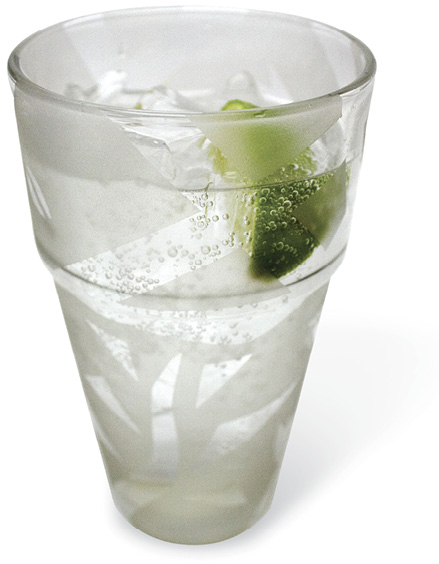
PROBLEM There’s no place to get a healthy lunch near my office.
solution One strategy is to think through what changes would make it easier for you to bring lunch from home. If you’re lucky, your office has a refrigerator, a microwave, or even a toaster oven. If so, get into the habit of making more of whatever you’re having for dinner, then pack up the leftovers for lunch the next day. If there’s no fridge, pack your lunch in a small insulated lunch bag with an ice pack. It will stay cold through lunchtime. On days when you don’t pack your lunch, check out here for our tips on eating better at fast-food places.
PROBLEM I like pizza. Is that so bad?
solution The devil is in the details. The thicker the crust—especially Sicilian—the higher the GL of the meal. If you add pepperoni, you really sabotage yourself with extra calories and saturated fat, which contributes to insulin resistance. So think healthier pizza: thin crust with veggies on top. Go for whole wheat crust if it’s available. Stick with one or two slices. Add a salad with vinaigrette dressing so you get enough food to feel full; the vinegar in the dressing will also help lower the GL of the meal. And make the soft drink a small one or, better yet, have sparkling water or unsweetened tea.
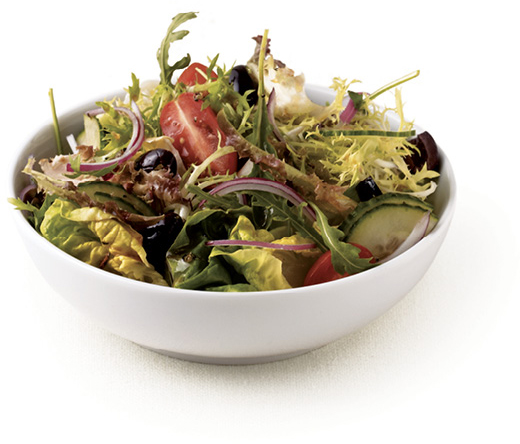
PROBLEM When I get salad from the salad bar, I usually load it with cheese, croutons, and creamy dressing. Is it still good for me?
solution You might as well eat a hamburger with a side of lettuce. Full-fat cheeses and creamy dressings are high in saturated fat, which is bad for insulin sensitivity. They and the croutons (which are fried) are also loaded with calories. Don’t abandon salads, just look for ways to keep them interesting and healthy. Add toasted sunflower seeds for crunch (and healthy fat) or a few black olives for richness (and again, “good” fat). Add hot peppers, if you like them, for kick. Throw on some chickpeas for additional texture. Top it all off with a vinegar-based dressing; experiment to find a tasty one you like, such as mustard vinaigrette for extra flavor.
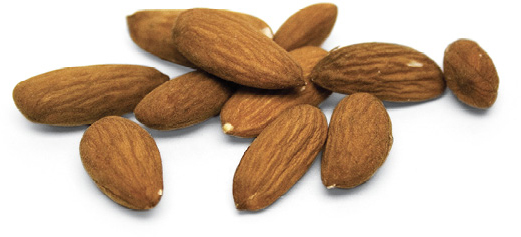
PROBLEM I am starving at about 3:00 in the afternoon, and I eat whatever junk food is in sight.
solution If you eat Magic foods for breakfast and lunch, this won’t happen. And that’s good, because research shows that when they’re really hungry, people can eat twice as much food as they normally would. Snacking itself isn’t bad at all, though, so keep healthy snacks on hand (think carrot sticks, apples, low-fat yogurt, a few whole grain crackers and peanut butter, or a handful of peanuts or almonds) to keep the sailing smooth between lunch and dinner.
PROBLEM I eat carbs when I’m stressed or anxious.
solution A lot of people reach for carbs when they’re stressed. (The scientific jury is out as to whether carbs actually help calm you down. The effect may simply be due to a sense of comfort from a familiar food.) There’s no quick solution here. The key is to figure out ways to cope other than eating. Practice deep breathing or give yourself a “timeout” by taking a 10-minute stroll, after which the craving should have passed. One of the best ways to deal with anxiety in general is to exercise; even a brisk 20-minute walk can lift your mood and calm you down. Studies show that people who exercise regularly have lower responses to stress than people who don’t. You can also practice prevention at the supermarket: Avoid buying simple carbohydrates so they aren’t within reach when you want them.
PROBLEM I know portion sizes are important, but it’s so easy to finish what’s on my plate.
solution Use a smaller plate! Really. Manufacturers are actually making many plates and bowls larger because we eat so much bigger portions than we used to. Fight the trend by serving dinner on a lunch plate. Serve juice in real juice glasses—they’re much smaller than regular glasses. Instead of using a big bowl for cereal, try a smaller dessert bowl. And always spoon out your dinner onto individual plates rather than leaving bowls or platters on the table within easy reach.
PROBLEM I’d like to eat more beans, but I don’t know much about cooking them.
solution You don’t have to make bean dishes from scratch. Canned beans can be no-fuss additions to something you’re already making. Making a salad? Rinse some canned chickpeas and toss them on top. Add canned kidney beans to nearly any vegetable soup. For a quick bean side dish, drain a can of white beans, put them into a microwavable bowl, and add some olive oil, grated Parmesan, and fresh pepper. Microwave for a minute or two, then mash for a delicious, high-protein, low-GL dish.
PROBLEM When I eat small portions at dinner, I’m still hungry.
solution First, make sure your dinner contains protein and “good fat,” not just carbs. That way, it will keep you full longer (plus, you’re less likely to overeat broiled chicken breast than buttery mashed potatoes). Second, try to eat a little slower so your stomach has more time to send the message to your brain that you’re full. Take plenty of time between bites for conversation or sips of water. If these don’t do the trick, start the meal with clear soup or a salad, both of which will occupy a lot of space in your stomach and help you put down your fork sooner. And remember: It’s okay to leave the dinner table a tiny bit hungry. You’ll feel fuller as your food digests.
PROBLEM I’d like to snack on fruit, but I just don’t think of it.
solution Put it in front of your face, literally. Studies show that people eat more fruit when it’s in a bowl on the counter rather than tucked away in the refrigerator. Lots of fruits stay fresh on the counter, such as apples, pears, plums, nectarines, and bananas. When you buy fruit, wash it as soon as you come home, then put it in a bowl. If you keep fruit in the fridge—such as grapes, which taste great cold—make sure it’s on the top shelf where it’s easy to grab. Like melon? Cut it into slices or cubes and refrigerate it in an airtight container so it’s ready to eat come snack time.
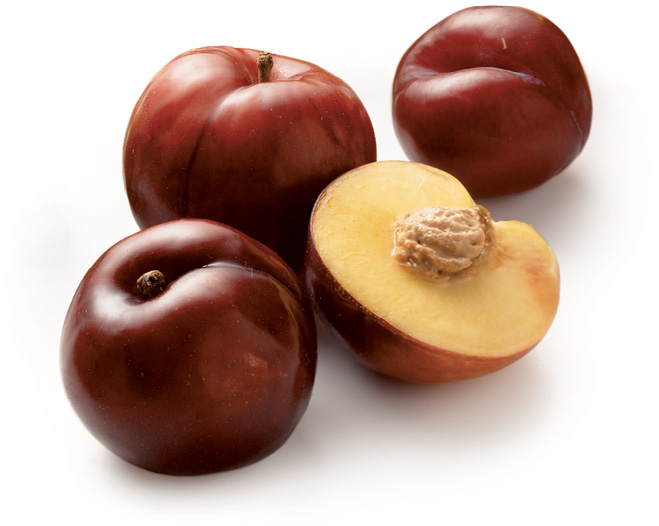
PROBLEM My pitfall is late-night desserts.
solution Try to have your dessert earlier. If you normally eat it at 10:00 p.m., aim for 8:30, and then brush your teeth so you’re not tempted to eat again. Another strategy: Avoid bringing home the kinds of desserts that you most tend to overeat; most people won’t leave the house at night just to get dessert. Finally, train yourself to enjoy healthier desserts, such as a bowl of berries with a dollop of low-fat ice cream or light whipped cream or a container of light preportioned pudding, and you won’t have to worry as much.
If most restaurants offered menus full of Magic fare like lean grilled meats, whole grain side dishes, and fruit-based desserts, it would be a snap to eat out the Magic way. But they don’t. Nearly all of the most common carbohydrate-rich foods on menus reflect those in the typical Western diet. In other words, they are high-GL foods. And at most restaurants, from fast-food joints to the fanciest white-tablecloth establishments, the food is floating in fat and stuffed with extra calories. Add to that the amazingly large portions that we have grown to expect for our dining dollars, and eating out seems impossible to do well.
It can be done, though, and learning to do it is a survival skill. That’s because we eat out—or have takeout meals—so often now that it’s a staple of our lives. Fifty years ago, about one out of four meals was prepared outside the home; today, it’s closer to one in two.
The first step is to accept how commonly you eat meals you haven’t made yourself, then plan to order better.
Make the challenge of eating out easier by being smart about what kinds of restaurants you patronize. Avoid the temptation of all-you-can-eat places, or buffet-style restaurants, where portions are hard to control. Avoid places known for enormous portions, like most steak houses. And you probably won’t find a lot of Magic foods on the menu at eateries that specialize in deep-frying an entire breaded onion. Enjoy a meal at one of these on your birthday, sure, but don’t do it on a regular basis.
Once you’re in the right kind of restaurant, get ready to get friendly with the waitperson. Ask them to hold the breadbasket so you’re not tempted to fill up on usually high-GL carbs while waiting for your meal to arrive. Inquire about how a dish you’re considering is prepared (Is it swimming in butter? Are the vegetables present in only token amounts?) and find out how big the portions are.
When you order, be bold: Order soup, salad, and an appetizer (not fried) for your meal rather than an entrée. Split an entrée and share a side order of vegetables to get more veggies into your meal—and fewer calories. If a main dish comes with a potato, ask if you can get an extra vegetable instead. (Especially if you’re a regular customer, you’re likely to get your way.) If you plan to order dessert, plan to share it, too. The best situation is when you get to know a restaurant’s regular fare, including how big the portions are, and use that knowledge to outsmart the menu.
